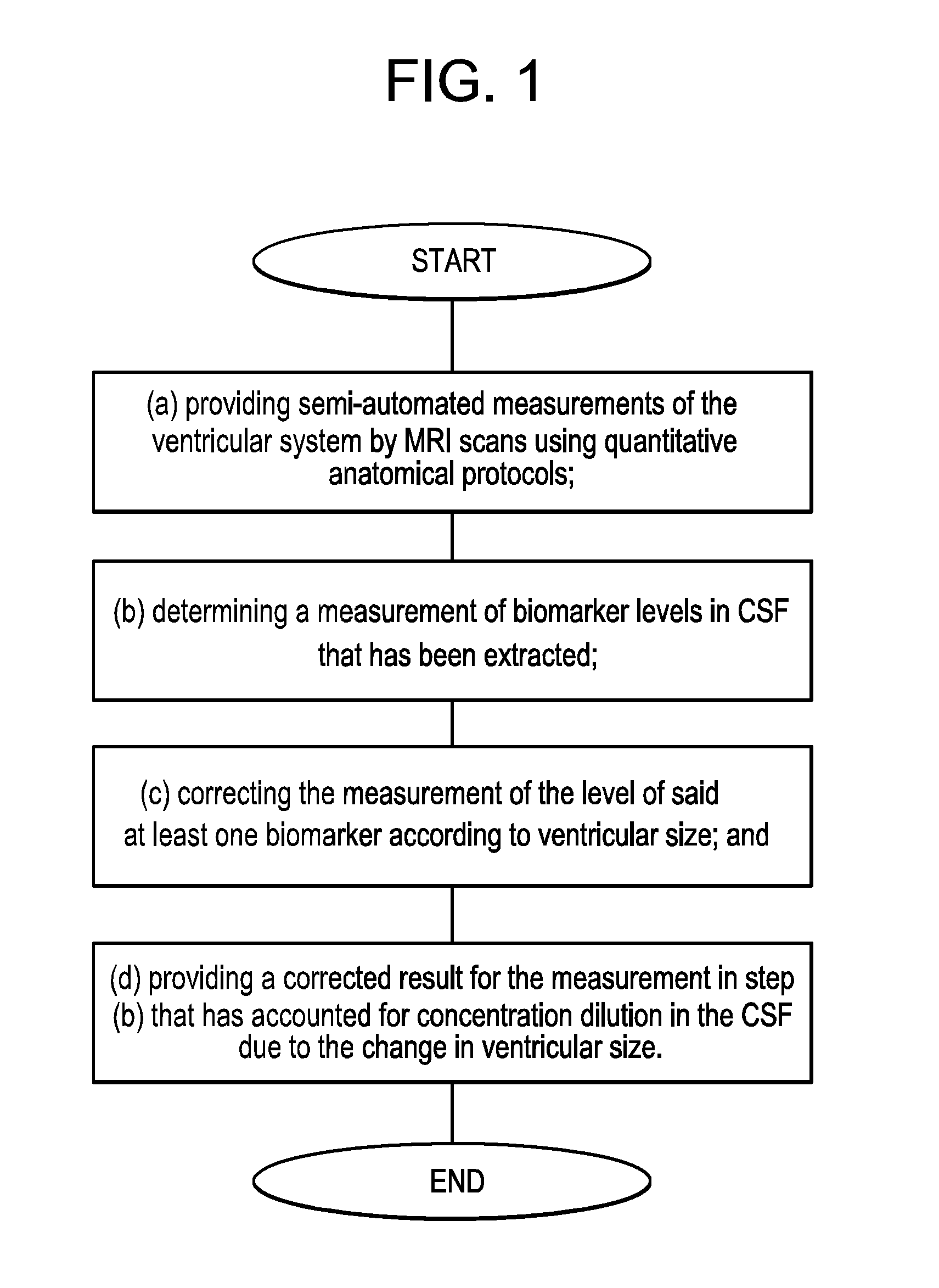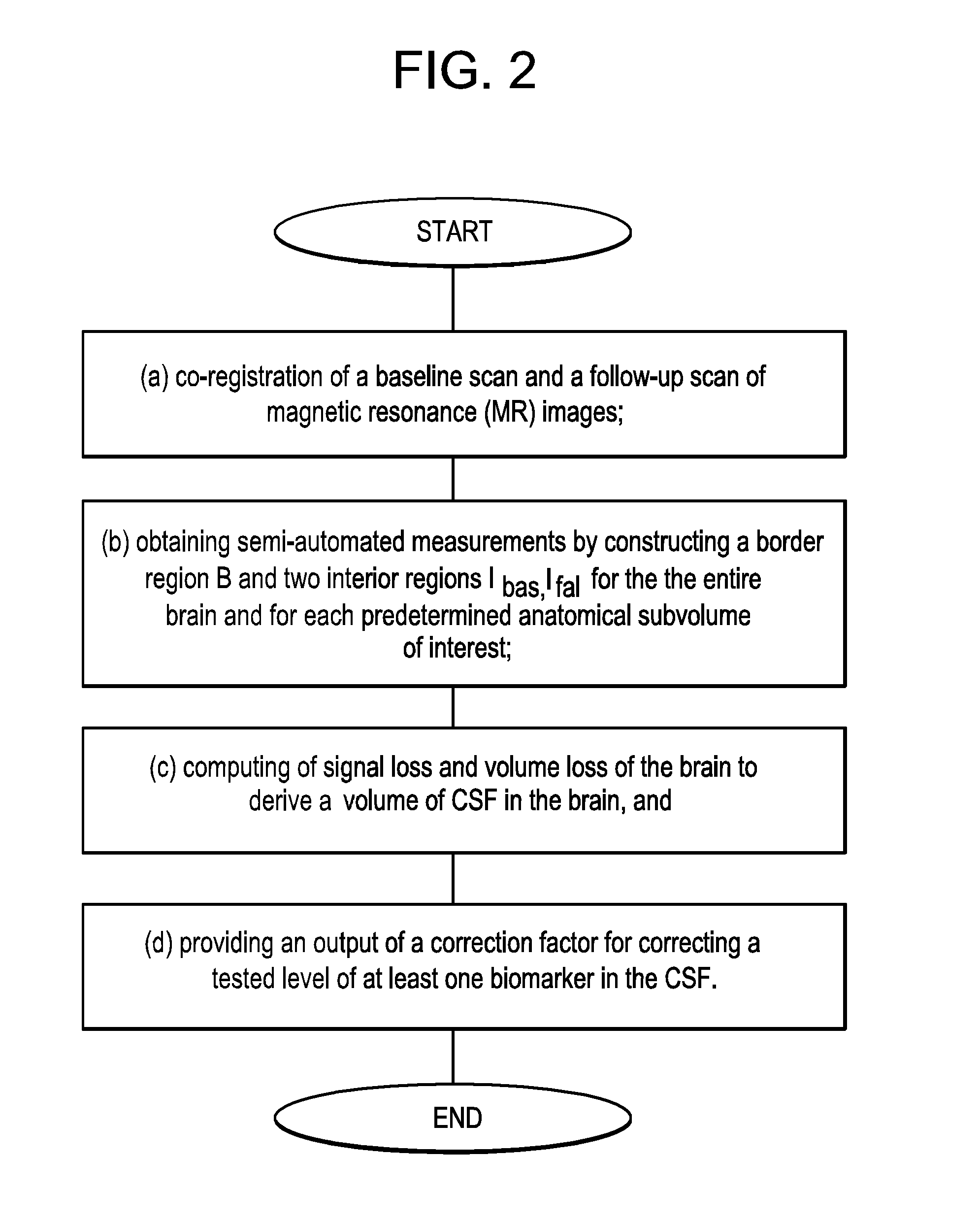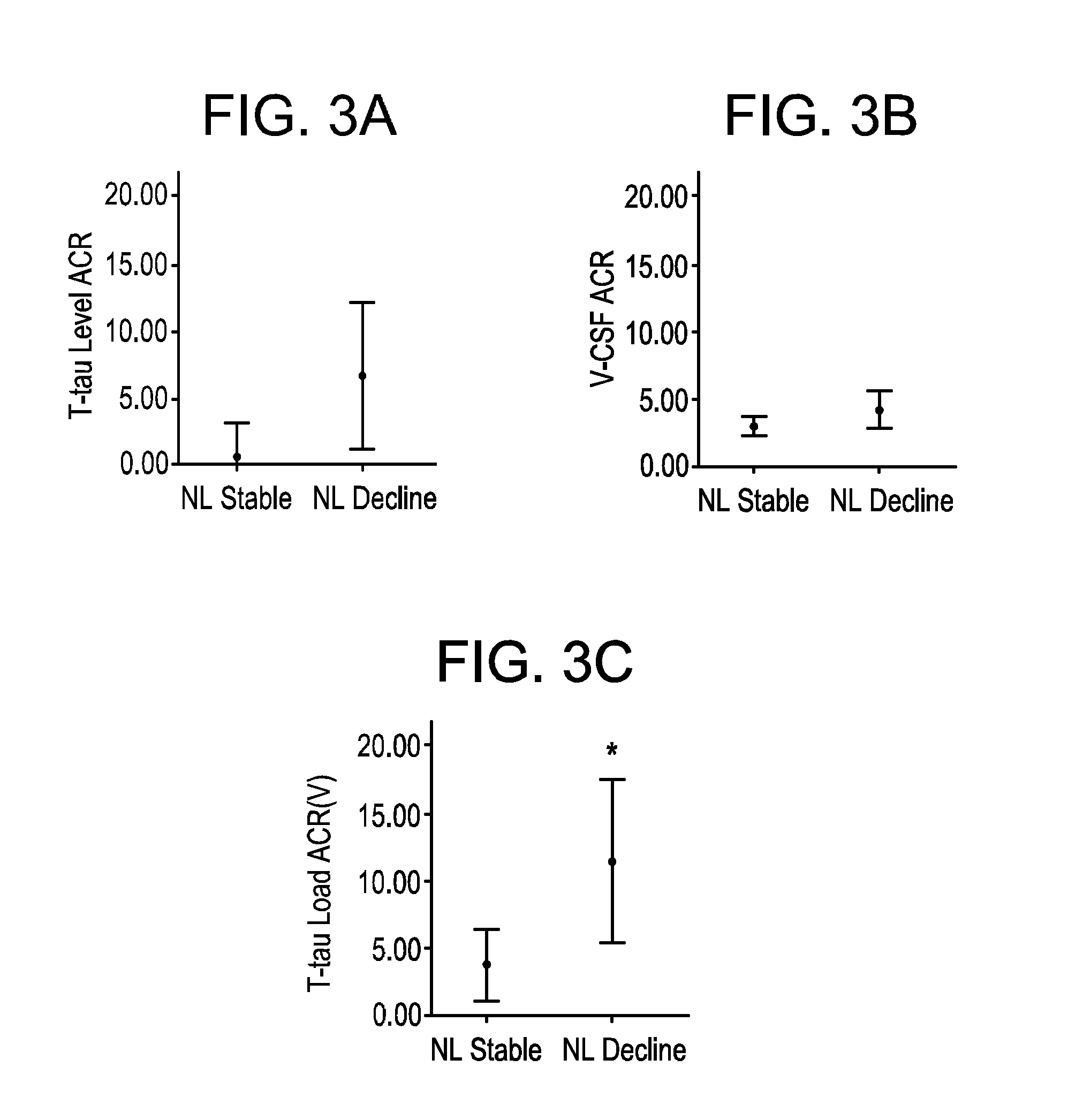Methods for diagnosing and assessing neurological diseases
a neurological disease and neurological technology, applied in the field of neurological diseases, can solve the problems of affecting the normal functioning of microtubules, affecting the function of microtubules, so as to improve the function and function of microtubules, reduce brain levels, and reduce the effect of brain level
- Summary
- Abstract
- Description
- Claims
- Application Information
AI Technical Summary
Benefits of technology
Problems solved by technology
Method used
Image
Examples
example 1
Correcting the CSF P-tau231 Level for the Ventricular Volume
Materials and Methods
[0159]In a longitudinal MRI and CSF study, in a one year study of an eleven person NL control group (Xgds=1.6, plus or minus 0.5, Xmmse=29.4, plus or minus 0.7) and eight mildly cognitively impaired (MCI) patients (Xgds=3, Xmmse=28.5, plus or minus 1.2) the cross-sectional and longitudinal hippocampal and CSF volumes, and from the lumbar puncture, the CSF levels (pg / ml) of P-tau231, Amyloid beta (AB) 1-40 (40) and Aβ42. The groups did not differ in age (range 52-81 years) for any of the measures.
[0160]At baseline, follow-up, and longitudinally, the MCI group was compared with the NL control group. During the study, one NL subject converted to MCI and two MCI subjects converted to Alzheimer's Disease.
Results
[0161]The hippocampal volume was significantly reduced in the MCI group at both baseline (15%; XNL=33+ / −35, XMCI2.8+ / −0.26, pNL=3.2+ / −0.24, XMCI=2.6+ / −0.30, p231 levels were found in MCI relative to c...
example 2
Longitudinal CSF Tau Dilution in Preclinical Alzheimer's disease
Materials and Methods
[0164]A New York University Institutional Review Board approved longitudinal study of 26 cognitively normal subjects (NL) with an age range of 61 to 86 was conducted. The subjects received minimum of three annual follow-up clinical and neuropsychological evaluations for up to 10 years. (See, Table 1)
TABLE 1Sample characteristicsNL-StableNL-Decline(n = 19)(n = 7)Age, baseline (range and mean years)61-85,69-86,68.5 (7.2)75.1 (6.3) *Gender, M / F9 / 103 / 4Education (years)16.7(2.1)16(3.2)MMSE Baseline29.5(.77)29.3(.51)MMSE Follow-up29.3(.82)29.1(.69)PARD Baseline9.5(2.6)7.9(2.1)PARD Follow-up9.5(3.3)6.4(3.3)ApoE ε4 (subject frequency).21.28Time to CSF follow up (years from2.87(.81)3.19(1.11)baseline)Last clinical visit (Years from baseline)6(2.2)6(2.2)Values are mean (SD) or percentage not correct as some are frequency and others are fractions.* Different from stable NL, p ≦ 0.05PARD: Delayed recall of the ...
PUM
 Login to View More
Login to View More Abstract
Description
Claims
Application Information
 Login to View More
Login to View More - R&D
- Intellectual Property
- Life Sciences
- Materials
- Tech Scout
- Unparalleled Data Quality
- Higher Quality Content
- 60% Fewer Hallucinations
Browse by: Latest US Patents, China's latest patents, Technical Efficacy Thesaurus, Application Domain, Technology Topic, Popular Technical Reports.
© 2025 PatSnap. All rights reserved.Legal|Privacy policy|Modern Slavery Act Transparency Statement|Sitemap|About US| Contact US: help@patsnap.com



